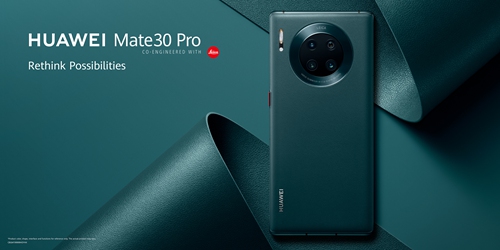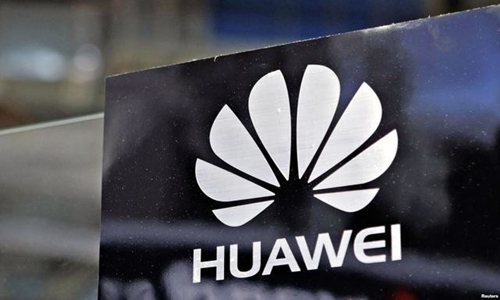HOME >> SOURCE
Huawei vows to both persevere and innovate through new challenges
Source:Global Times Published: 2019/12/25 19:52:43

Photo: Courtesy of Huawei
As a global technology leader, Huawei remains steadfast in its commitment to bringing about universal digital access for a fully connected, intelligent world.
These are trying times for Huawei. To remain competitive, it is of the utmost importance that Huawei invests in its core capabilities. Without a strong foundation to stand on, Huawei will not have the resilience to weather these challenges, let alone thrive.
Huawei's strategy is already in motion. Huawei is undergoing a transformation. From this metamorphosis, Huawei will emerge not just as a device company, but a purveyor of all-scenario experience.
With its Kirin chipsets, Huawei has demonstrated its capability to innovate on the chipset front. With its HarmonyOS, it brings IoT closer to consumers. Finally, with Huawei Mobile Services (HMS), it provides a platform on which apps can form a new, inclusive digital ecosystem. All these platforms coalesce into the all-scenario experience that is uniquely available to Huawei device users.
A track record of perseverance
Huawei has come a long way to become a global technology powerhouse. Like a few of today's largest Chinese technology companies, it comes from humble beginnings as a Shenzhen start-up. Back in 1987, Ren Zhengfei started the company with minimal capital and three employees. With little to his name, Ren persevered. As the Chinese government enacted economic reforms, telecommunications became one of the most important sectors supporting the country. Seizing the opportunity, Huawei made its first step to prominence.
But it was not all smooth sailing. In 1998, when Huawei first dabbled in wireless telecommunications, it had less than one percent of the market. This stands in stark contrast to the 42 percent share that Huawei now commands in the Chinese handset market. Nevertheless, Huawei persevered.
When 3G was in its infancy, Huawei introduced the world's first distributed base station. It allowed Huawei to gain a foothold in the Dutch market, and subsequently win a tender to partner with Vodafone in Spain. Over the next few years, Huawei bided its time and steadily built its clientele. By the end of 2012, Huawei had become the largest telecommunications equipment provider in Europe. Huawei's perseverance paid off.
Dedication through hardship
A lot of consumers today don't know Huawei by its telecommunications equipment. Instead, they come across its phones. It wasn't until 2003 that the Chinese tech giant entered the handset market as an original device manufacturer, making handsets on behalf of carriers.
In six short years, Huawei shipped more than 30 million devices, which placed the company second in terms of global and China CDMA phone shipments. The low barrier to entry attracted many manufacturers to follow in its wake, leading to a declining profit margin. This prompted Huawei to shift its strategy toward the premium market.
In 2011, Huawei launched the first high-end flagship smartphone, the HUAWEI Ascend P1. But compared with its competition, the Ascend P1 performed poorly in the market.
In 2014, Huawei finally struck gold with the HUAWEI Ascend Mate 7, which was launched to critical acclaim.
Following its release, each new flagship Huawei device came with new innovations that continued to push the envelope. For instance, with the HUAWEI P9, Huawei introduced the industry's first dual-camera setup; with HUAWEI Mate 9, it partnered with PORSCHE DESIGN to offer a new class of smartphones that fuse technology with high-end fashion; and more recently with the HUAWEI Mate X, it gave consumers a chance to experience the foldable future.
Through perseverance, Huawei transformed itself from a follower to a leader. It is now the world's second largest handset manufacturer, with sights set on becoming the first.

Photo: VCG
Huawei is in good position
If Huawei's history has taught us anything, it is that perseverance will pay dividends. Being put on the Entity List represents one of the greatest threats Huawei has ever faced as a company. As always, Huawei remains confident.
The next era of smart devices will be marked by ubiquitous connectivity. A singular device or interface will no longer be enough to service evolving consumer needs. Pervasive intelligence will also revolutionize the way users interact with devices.
Special apps will gave way to more sophisticated digital platforms that harness big data, AI, and the cloud. This will in turn deliver customized services to individual users. In other words, apps will no longer be the singular driving force behind smart technologies.
Imagine no longer having to bring your smartphone to the gym, because your headphones can connect to your smartwatch for music. Imagine your car knowing where to go at the moment you hop in, because you already planned your routes on your smartphone. Imagine having a unified virtual workspace that is connected to your smartphone and laptop, enabling you to seamlessly work with several devices at once. This is all possible in the near future.
It seems that Huawei faces an endless list of tests, with reports suggesting that the Trump administration may go further to place the Chinese technology giant on its Specially Designated Nationals (SDN) list, restraining its access to the US financial system.
While the looming sanctions may further complicate matters for Huawei, the company remains well-positioned to lead the charge toward a post-app world, where it does not have to rely on other companies to deliver an all-scenario experience to consumers.
Posted in: PRESS RELEASE